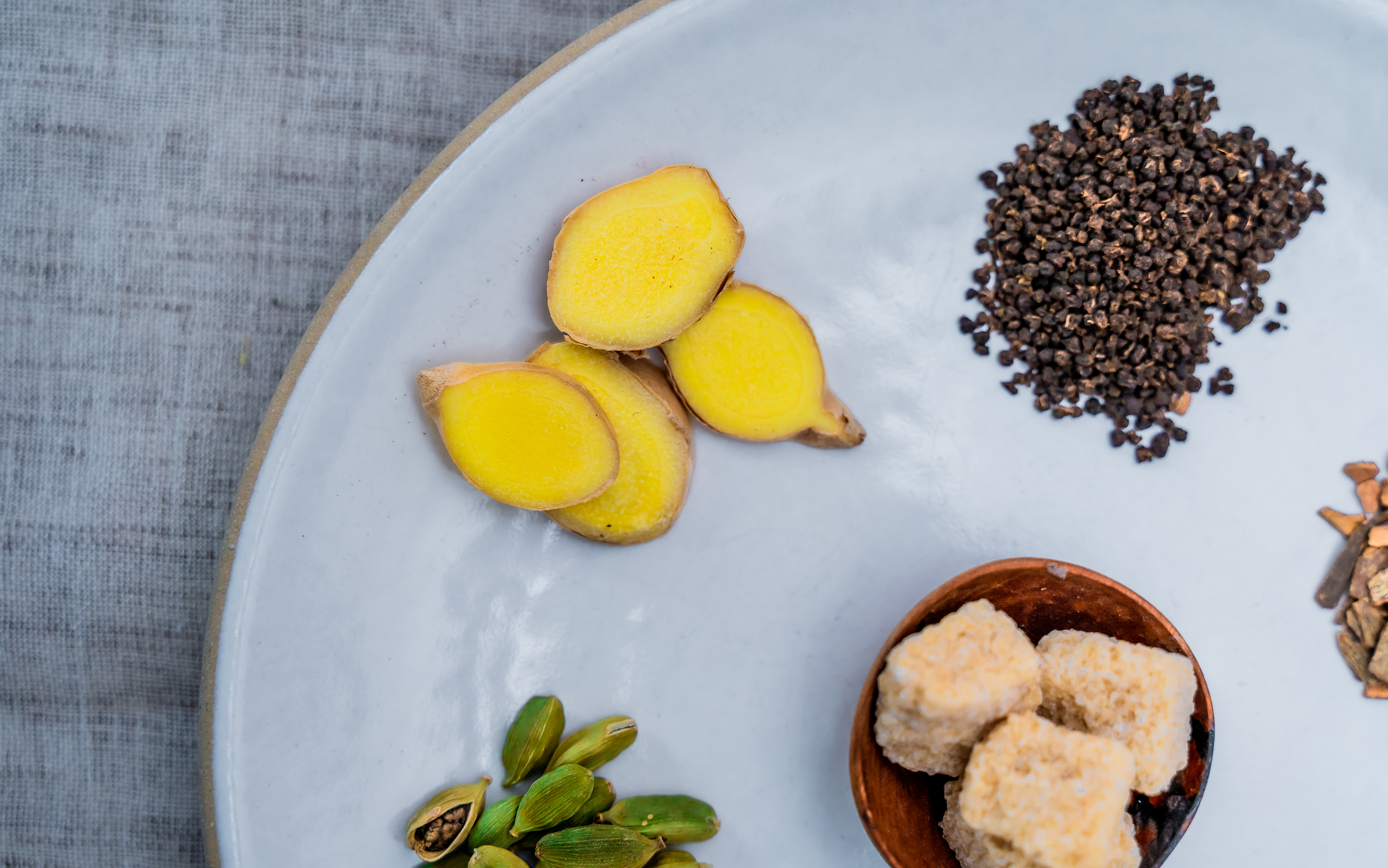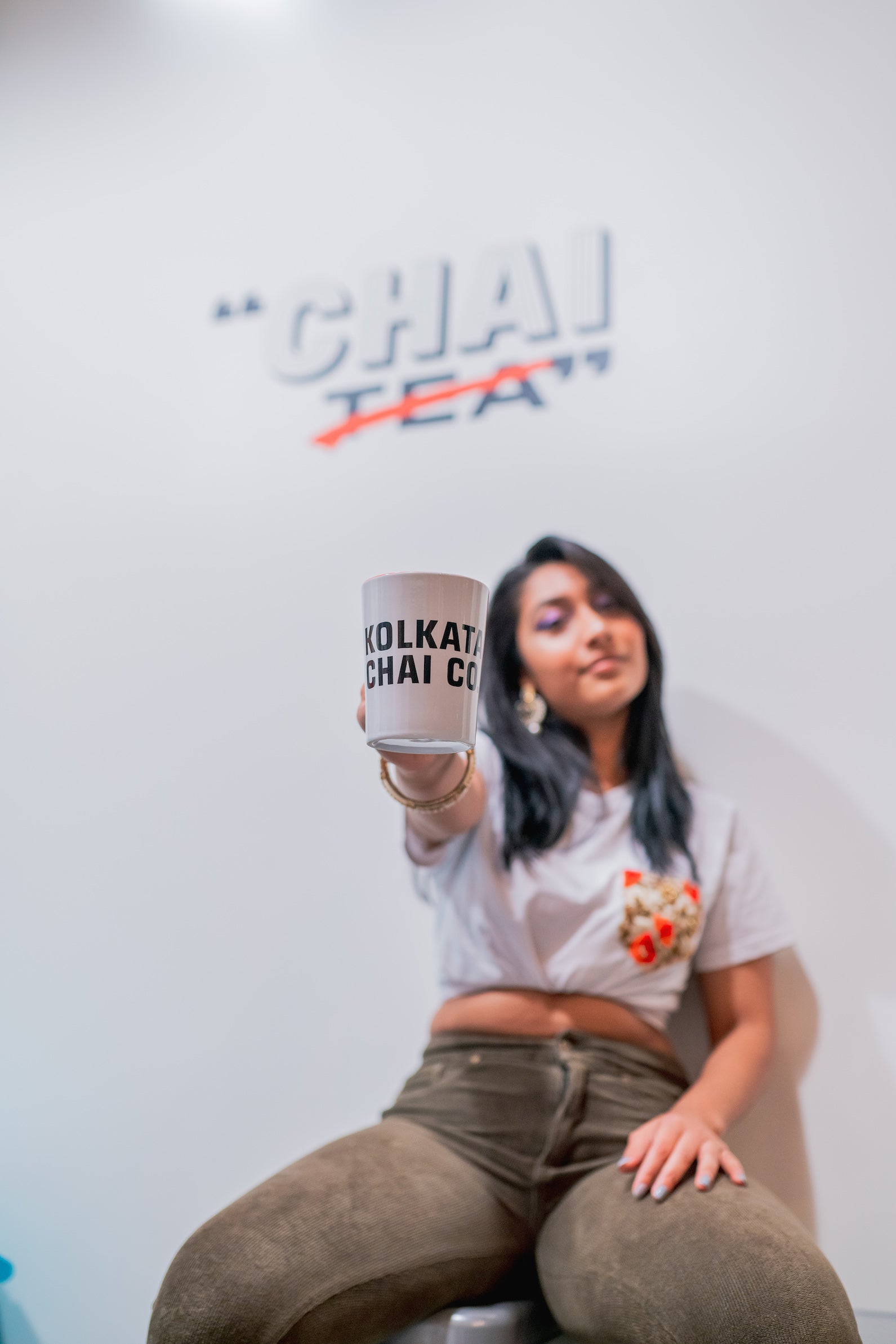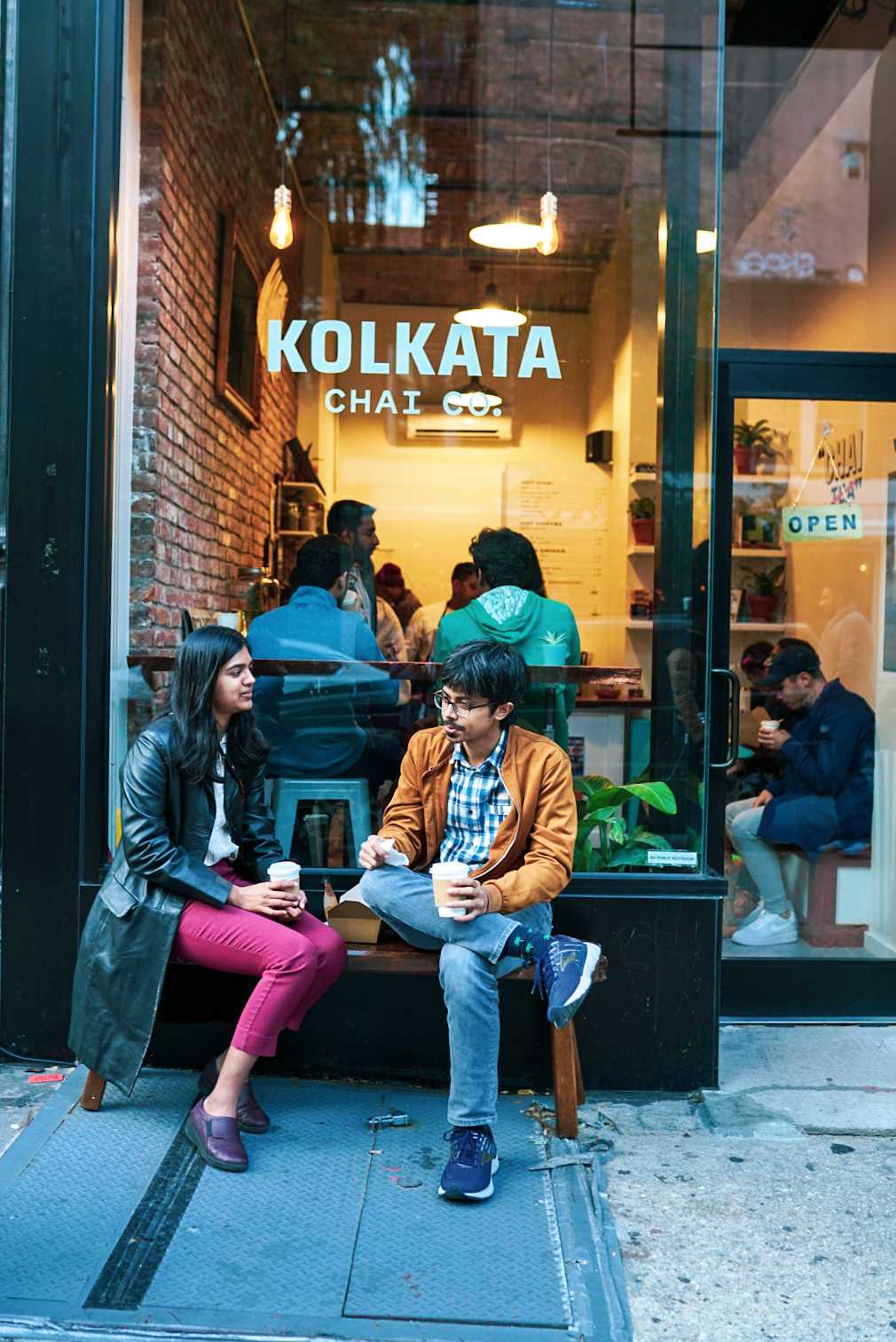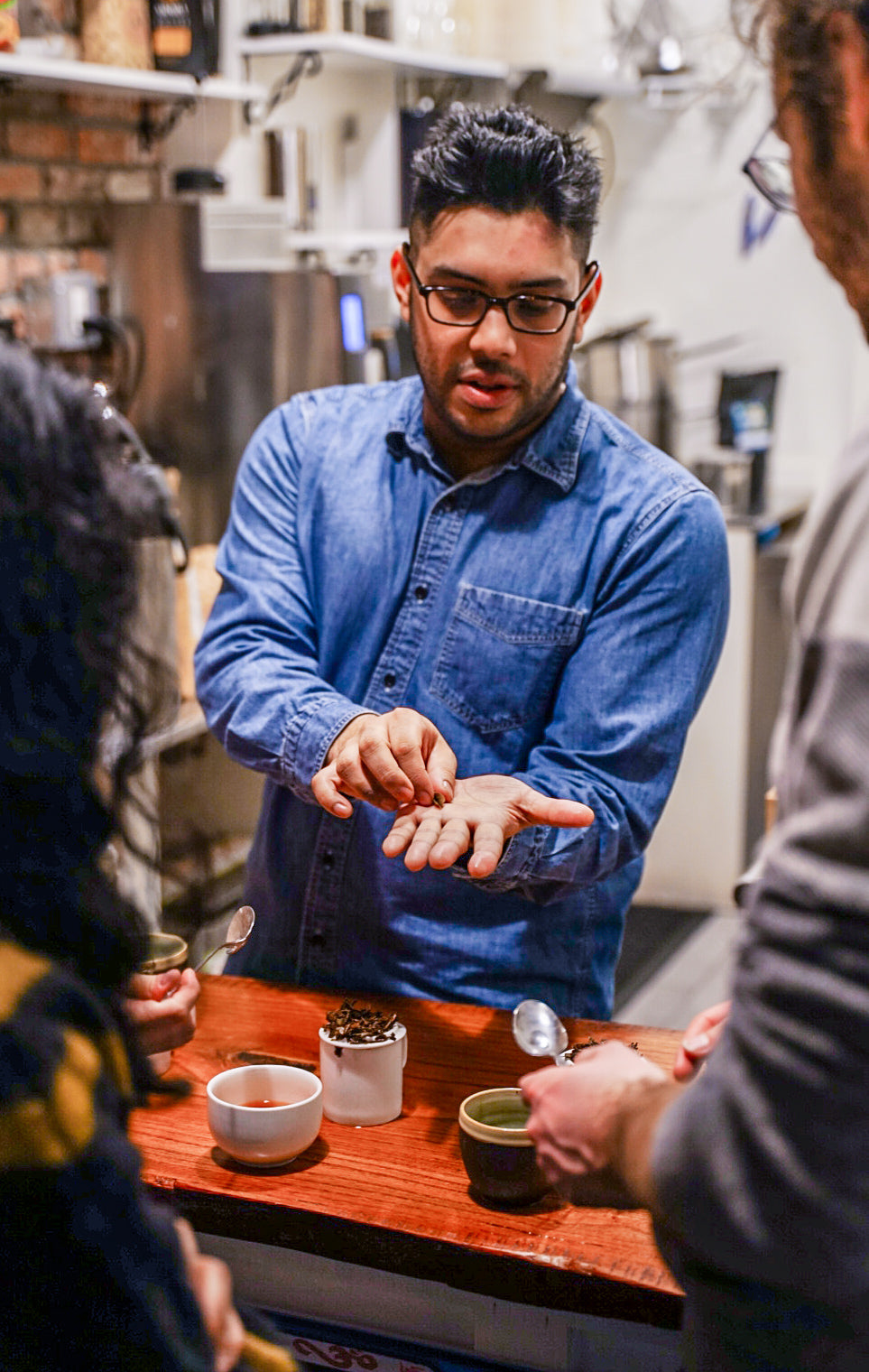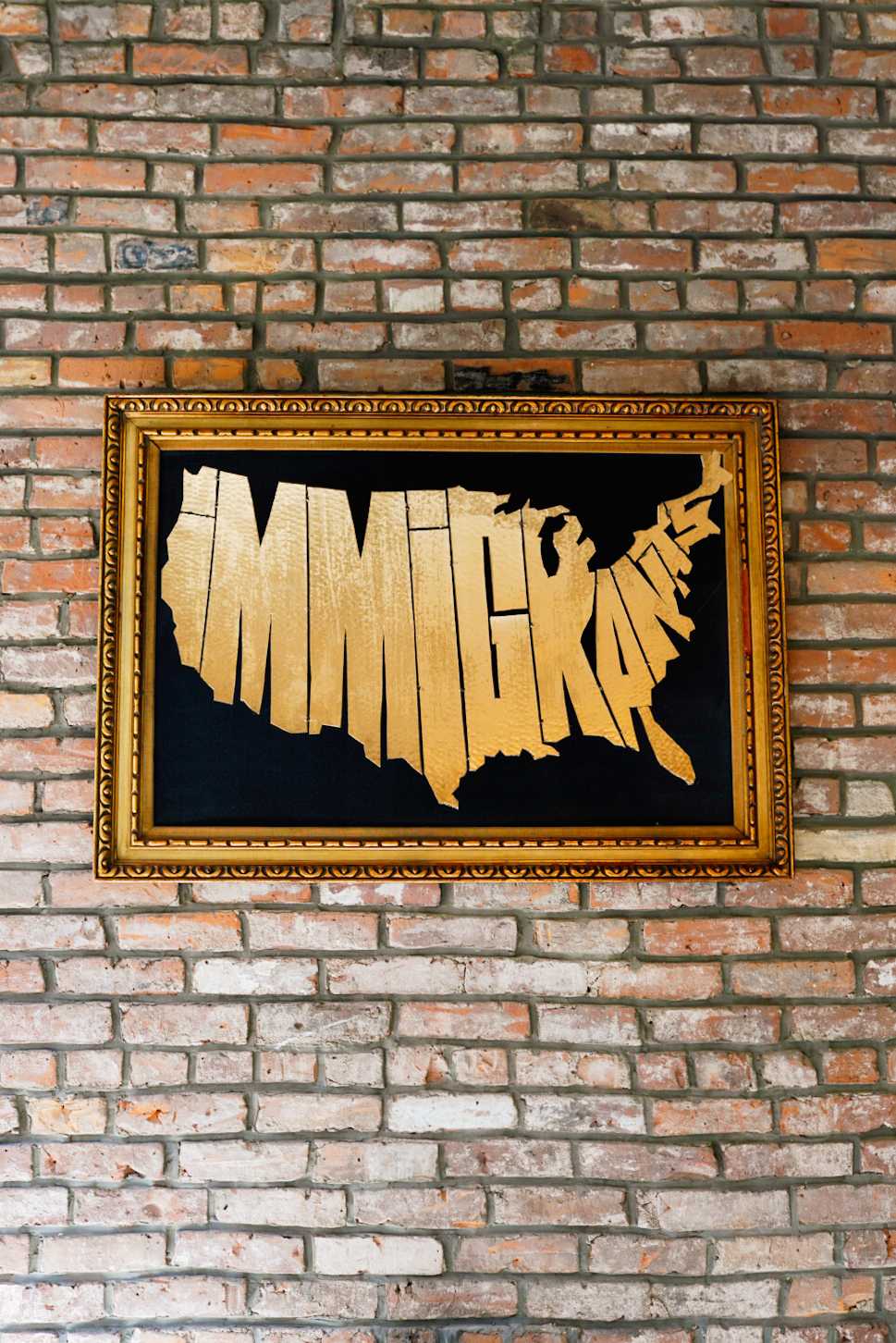- — KCC BLOG — KCC BLOG — KCC BLOG — KCC BLOG — KCC BLOG — KCC BLOG
- — KCC BLOG — KCC BLOG — KCC BLOG — KCC BLOG — KCC BLOG — KCC BLOG
What is chai
All about chai
Chai translates to “tea”, and masala chai typically means a cup of spiced milk tea.
Chai has a sweet and spicy flavor profile, thanks to spices like cardamom and cloves which interact with the sugar and milk.
You might’ve had a watered down version of masala chai at your local cafe, often called a “chai tea latte” or “chai latte”, but these lack the authentic ingredients and are usually full of syrup and sweetener instead.
Having spent many summers in Kolkata, India, we took tea-drinking for granted since it’s an integral part of daily life. Chai is usually consumed once in the morning to start the day and again in the evening after work. The ubiquity of roadside chai stalls across India is shocking and you’ll never have to travel more than 10 minutes to get a fresh cup.
Chai is social, it conveys a sense of home and it’s the most accessible drink across the South Asian continent. Everyone can easily enjoy a great cup of tea.
History
Around the 19th century, the British introduced tea plantations to India by using plants they “imported” or likely stole, from China. This is probably how the word “chai” came into existence since the Chinese word for tea is “cha.”
Then, the British exported and introduced tea as a medicinal drink meant for the upper class back home in Europe, and it soon became a status symbol across the continent.
Back in India, tea was prohibitively expensive for the local population, so spices, milk, and sugar were added to the brew to reduce costs. However, once the CTC (cut, tear, curl) method of making tea was invented by Sir William McKercher in 1931, tea became affordable, and cultivation started on a large scale in India.
Today, CTC chai is consumed across many households in India and it’s the type of tea that you will find used by street vendors selling masala chai.
Chai culture can differ across the regions of India – beginning with Kolkata and its eclectic tea-houses to Mumbai and its famous “cutting chai” (a smaller serving of the same beverage, offered at reduced prices for working people).
Chai breaks are a part of all work cultures in India and “adda” is the Bengali practice of discussing politics and current events with friends and family over a cup of tea.
What’s in Masala Chai?
Masala chai is a mixture of black tea leaves brewed in hot water, with milk, sugar, and spices added until it’s well-blended and reflects a rich, dark brown color.
The individual spices are responsible for the unique flavor profile and wellness benefits of masala chai.
Spices
Spices contribute to the flavor profile of chai and are responsible for the long list of wellness benefits associated with drinking tea. The most common spices used in masala chai include cloves, cardamom, black pepper, cinnamon and ginger.
Each spice has something to offer in terms of health and flavor:
Cardamom has a delicate aroma and is an antioxidant which improves oral health, aids digestion, lowers blood pressure amongst other benefits.
Cloves, which are collected as dried flowers of the clove tree, are known for their inflammation reducing qualities.
Ginger adds a distinct kick and can help fight the common cold due to its antioxidant properties.
Cinnamon is rich in antioxidants and gives a floral and fruity flavor to every cup.
Black pepper gives chai the heat and freshness.
Milk
The distinguishing quality of chai from other types of tea is that it is brewed with milk in equal amounts of water. The milk acts as a counter to the spices and helps smoothen the overall taste.
Chai in India is typically made with buffalo milk or cow’s milk, but as tastes have evolved so has the culinary preferences – today, you’ll find us serving our chai with oat milk at our cafe in New York City.
Flavors
A good cup of chai should have a rich brown color, intoxicating aroma, and a full-bodied mouthfeel.
Different tea leaves grown in different parts of India have their unique flavor. Assam tea which is considered the king of the black teas has a full-bodied, malty taste. Darjeeling tea is light with a delicate aromatic smell. Nilgiri tea is dark and fragrant.
We use Assam CTC tea, the same kind as the street vendors in India to produce the most authentic and flavorsome masala chai.
Variations
Where there’s passion, there’s innovation.
Today, masala chai is seen in many variations. You can make a cup with traditional whole fat milk or brew it with oat milk, almond milk, coconut milk or soy milk. Each one lends itself to a unique flavor.
In India, the masala chai has come of age with innovative variations like the tandoori chai where half-prepared chai is poured into heated clay cups - giving way to a lava-like effect of frothing. Watch one of our favorite food influencers, @RootedinSpice, make a cup of Tandoori chai with our Signature Masala Chai mix.
A Dirty Chai is a heady mixture consisting of chai and a shot of espresso which is a supercharged caffeine boost that can lift anyone out of a hangover, all-nighter or anything in between. Stop by our cafe for our best-selling version of this.
Chefs and bartenders have taken to producing chai-powered desserts and infusing the masala into cocktails, such as the Chai-tini (a chai-infused spin on a martini) or our infamous oat milk chai soft serve.
What is a Chai Tea Latte?
Chai lattes
In the 1960’s, patrons of the famed Caffe Mediterraneo in Berkeley, California were introduced to espresso and cappuccinos by its Italian founder. Being too concentrated and rich for the American palate, the customers would ask for “more milk” in their Italian coffee drinks. The owner would then tell his staff to add more “latte” - literally milk in Italian. The request became so popular that the word “latte” in America became synonymous with the milkier version of a cappuccino.
In a similar way, a chai tea latte is a milkier, Americanized version of masala chai.
What is a chai tea latte
Today, nearly every coffee shop in America serves a chai tea latte. It’s consistently one of the most popular hot drinks served to tea aficionados and non-coffee drinkers alike. Most cafes today prepare their chai tea lattes with either ready-to-drink chai mixtures, powders or chai syrup along with milk and sweetener.
Tea lattes
There are many variations of tea lattes. There are a great variety of chai mixtures available in the market today. A tea latte is a milky tea that will typically feature a black tea, green tea, matcha tea or an Earl Grey tea. Served both as hot drinks and cold, tea lattes are a pick-me-upper and bold in their own way.
How authentic chai is different
A harmonious blend of native Assam black tea, spices such as cardamom, cloves, anise seed and milk, chai is one of the most consumed beverages in the world today.
Chai has always been known as cha or chai and té or thé. The origins of both words can be traced back to China - which has multiple dialects and hence the two different ways to identify the beverage. That’s why when you hear someone say “chai tea”, it’s literally a repetition of the same word twice and something that we strongly suggest you don’t do!
Similar to the size names Venti, Grande, and Tall - the chai tea latte was born as a way to introduce and promote masala chai to the American consumer. But along with changing the name, American coffee shops changed the essential spices and added more sugar and milk than the original, transforming it into a different beverage to an extent.
That’s why we started Kolkata Chai – to reclaim the narrative around chai and give people the most authentic version available.
Consumed primarily as a health tonic, origins of chai date back more than 5,000 years. The natural medical practice of Ayurveda speaks about the health benefits of mixing spices such as cloves, cardamom, ginger, and star anise. Combined with hot water, chai was effective in preventing infection, promoting good digestion, boosting moods, and even acting as a mouth freshener.
History suggests that the British began encouraging tea consumption amongst the local Indian population to create a market for the product that they were aggressively cultivating and exporting. But the black tea prices were prohibitively expensive for most Indian people at the time. So, using a little bit of ingenuity and heightened spice sensibilities, the locals infused the black tea leaves with rich spices, sugar, and milk. The chai spices like cinnamon sticks, cloves, cardamom, peppercorn, and ginger helped cut down the costs and increase the deliciousness of the beverage. How genius.
Recipe
Instead of showing you how to make a chai latte, let’s make an authentic cup of masala chai.
Ingredients
- 3 tsp DIY Masala Chai mixtures
- Milk or vegan milk to taste
- Sweetener of choice to taste
- 1 cup water
Process
1. Bring water to a boil add 3 tsp of our Masala Chai mix
2. Simmer for 3 min and add milk or vegan milk
3. Boil, steep for 3 min, strain and sweeten
